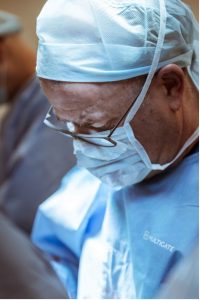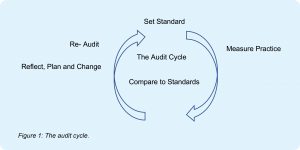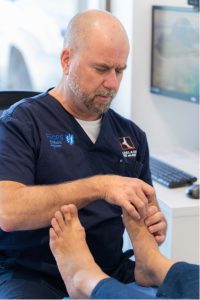The concept of ‘what gets measured gets managed’ has been attributed to management consultant Peter Drucker. However, the notion of ‘what gets measured gets managed’, may have origins from the Scottish physicist Lord Kelvin who developed the absolute temperature scale. So, the concept of ‘what gets measured gets managed’ has been with us for nearly 200 years.
Measuring to assist in managing outcomes has become an important framework in all healthcare disciplines. 1, 2, 3 The use of clinical audit to measure and improve outcomes is crucial to providing the best quality healthcare.
The ACPS National Audit Reports
In 2011, the Australasian College of Podiatric Surgeons (ACPS) developed and implemented an online audit tool to measure and report foot and ankle surgical outcomes. The ACPS National Audit Reports are used to improve the outcomes of foot and ankle surgery through national peer review as a quality improvement activity.
The ACPS National Audit Reports remain the only such publications available to the public for any specialist providers of foot and ankle surgery. This means the ACPS National Audit has set the benchmark for best practice in delivery of foot and ankle surgical care.
In the development of this tool a standardised surgical audit cycle was utilised. Auditing surgery requires that practice standards are identified. Where no standards exist, the literature is used to establish them. If minimal literature can be found expert consensus is used to establish standards. The surgical outcomes of interest are then measured. A comparison of the measured outcomes is then made with the previously selected standards. Analysis of the outcomes as compared to standards informs reflective practice. Then if indicated planning and executing practice change can happen. The audit cycle is an iterative process as shown in Figure 1.
Figure 1: The Audit Cycle.
Why audit surgical outcomes
Audit provides an accepted method for surgical providers to evaluate their performance and outcomes to improve quality of service provision. In essence, surgical audit is really the only way that surgeons can provide evidence that they do in practice what they say they do.
The importance of surgical audit rapidly increased in Australia from the late 1990s with the growing attention to clinical governance in healthcare. The Australian Commission on Safety and Quality in Health Care (ACSQHC) has set a standard for clinical governance. The ACSQHC standard requires health care organisations to take responsibility for continuous improvement of safety and quality in services ensuring patient centred care. Clearly auditing outcomes is an integral component of meeting the ACSQHC standard.
How did the ACPS develop its audit?
Under the supervision of Queensland University of Technology, audit activity in general, orthopaedic, plastic, and podiatric surgery was examined using a case study design. Enablers and barriers to audit participation were then identified and explored.
Results of the case study provided guidance to develop a Delphi survey. An international expert panel was formed; comprised of individuals from the above-mentioned surgical specialties or who were associated with foot and ankle surgery.
Using the Delphi technique, expert consensus was used to determine what and how to audit foot and ankle surgery. The Delphi-derived consensus informed modification of the Royal Australasian College of Surgeons generic dataset for surgical audit.
The ACPS online audit tool was then developed based on the Delphi survey findings. Piloting of the ACPS online audit tool was then completed. Usability of the ACPS online audit tool and data entry validity and reliability was assessed using an online survey. The ACPS online audit tool has been through two additional I.T. upgrades and is currently in a third phase of development and improvement.





